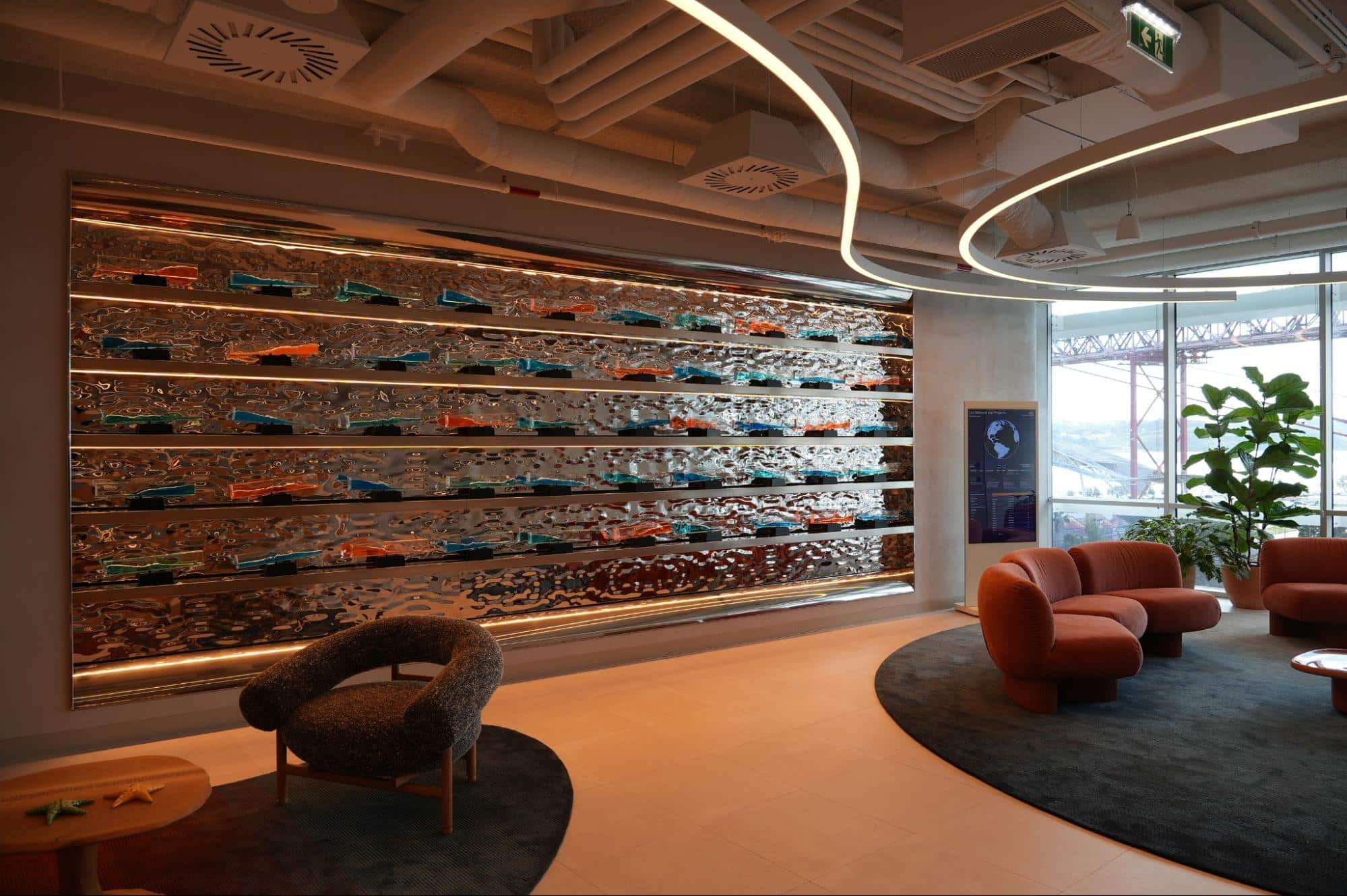Cloudflare, the renowned global company specializing in cybersecurity and internet performance services, has once again surprised with a new commitment to creativity and technological innovation. At its European headquarters in Lisbon, it has inaugurated a spectacular “wave wall” made up of 50 constantly moving wave machines. This installation is not just decorative; it generates entropy to strengthen the cryptographic security of the internet, integrating with the company’s well-known LavaRand system.
This initiative adds to Cloudflare’s previous sources of entropy, such as the lava lamps in San Francisco, the chaotic pendulums in London, and the suspended rainbows in Austin. The idea, as explained by Cloudflare’s CEO, Matthew Prince, originated in 2023 with a key question: “What element could represent Portuguese identity while simultaneously providing randomness for our infrastructure?” The answer was waves, an inseparable symbol of Portugal’s maritime culture.
Technology and Tribute to Portuguese Maritime Tradition
The wave wall not only strengthens Cloudflare’s cryptographic infrastructure but also pays homage to Portugal’s over 600 years of maritime history. From the early expeditions in the early 15th century to the giant waves of Nazaré, the country’s relationship with the ocean runs deep. This connection also inspired the architecture and design of the new space, where the curved shapes and play of lights constantly remind visitors of the movement of water.
The installation is located next to Cloudflare’s Radar Display screen, which shows global internet traffic data, with the majestic 25 de Abril Bridge and the Tagus River estuary as a backdrop.
Technical Challenge and Specialized Craftsmanship
Creating the 50 wave machines was no easy task. The company had to collaborate with Hughes Wave Motion Machines, a small American workshop founded by a former Lockheed Martin engineer, specializing in custom wave motion machines. After hundreds of hours of testing, adjustments, and perfecting the liquid formula, these unique pieces were born, capable of running continuously.
Each machine measures 45 cm, contains half a liter of colored fluids in green, blue, and Cloudflare’s distinctive corporate orange, and performs up to 20,000 swings per day, generating a constant flow of random data.
How Does This Wall Contribute to Internet Security?
Network security relies on cryptographic systems that need high-quality randomness seeds. Cloudflare, through LavaRand, uses images captured from these chaotic devices—like the new wave wall—to generate this entropy. The images are processed and converted into random byte strings, which are distributed to servers to strengthen cryptographic key generation, protecting millions of transactions and connections every second.
When a developer uses functions like Math.random() in Cloudflare Workers, part of that randomness comes precisely from these physical systems. Even the public API drand, used by institutions and companies to obtain verifiable random numbers, draws from the entropy sources that the company maintains active in various offices worldwide.
A Collaborative Project and Local Pride
The design of the space in Lisbon was the result of collaboration between Cloudflare’s internal team and Portuguese architecture studios, highlighting the participation of women leaders at all stages of the project. The meeting rooms are named after Portuguese beaches, and every detail, from the lighting to the furniture, seeks to reinforce the feeling of movement and connection with the ocean.
The Community Gets Involved: Choosing the Name of the Wave Wall
Cloudflare has invited its global community to participate in the selection of the official name for this installation. Among the options are “Chaos Reef,” “Waves of Entropy,” and “Wall of Waves,” among others. Voting is open and can be done through a form on their website.
Innovation as a Hallmark
This wall in Lisbon becomes another milestone that demonstrates how Cloudflare combines innovation, technology, and local culture to protect the global internet infrastructure. The company manages over 71 million HTTP requests per second, a number that reaches 100 million at peak times, and all of these communications partially depend on the robustness and quality of the entropy generated by initiatives like this.
via: cloudflare

